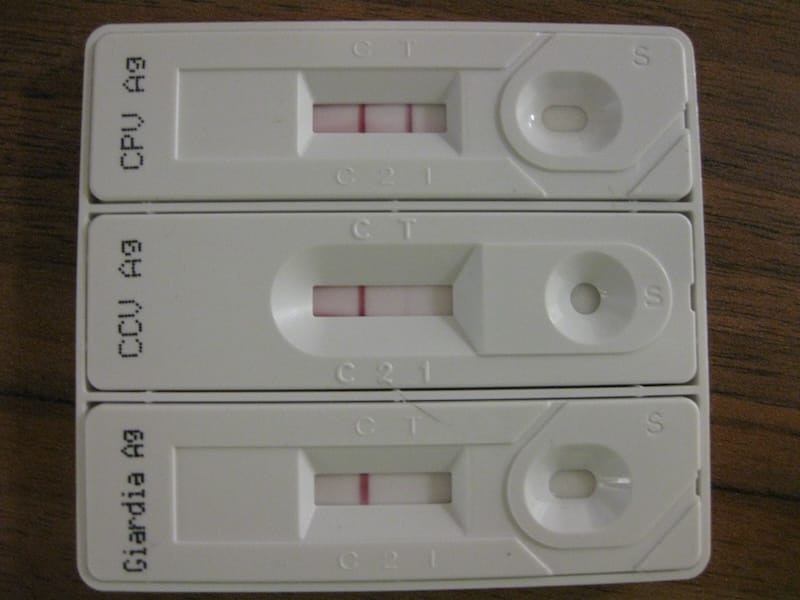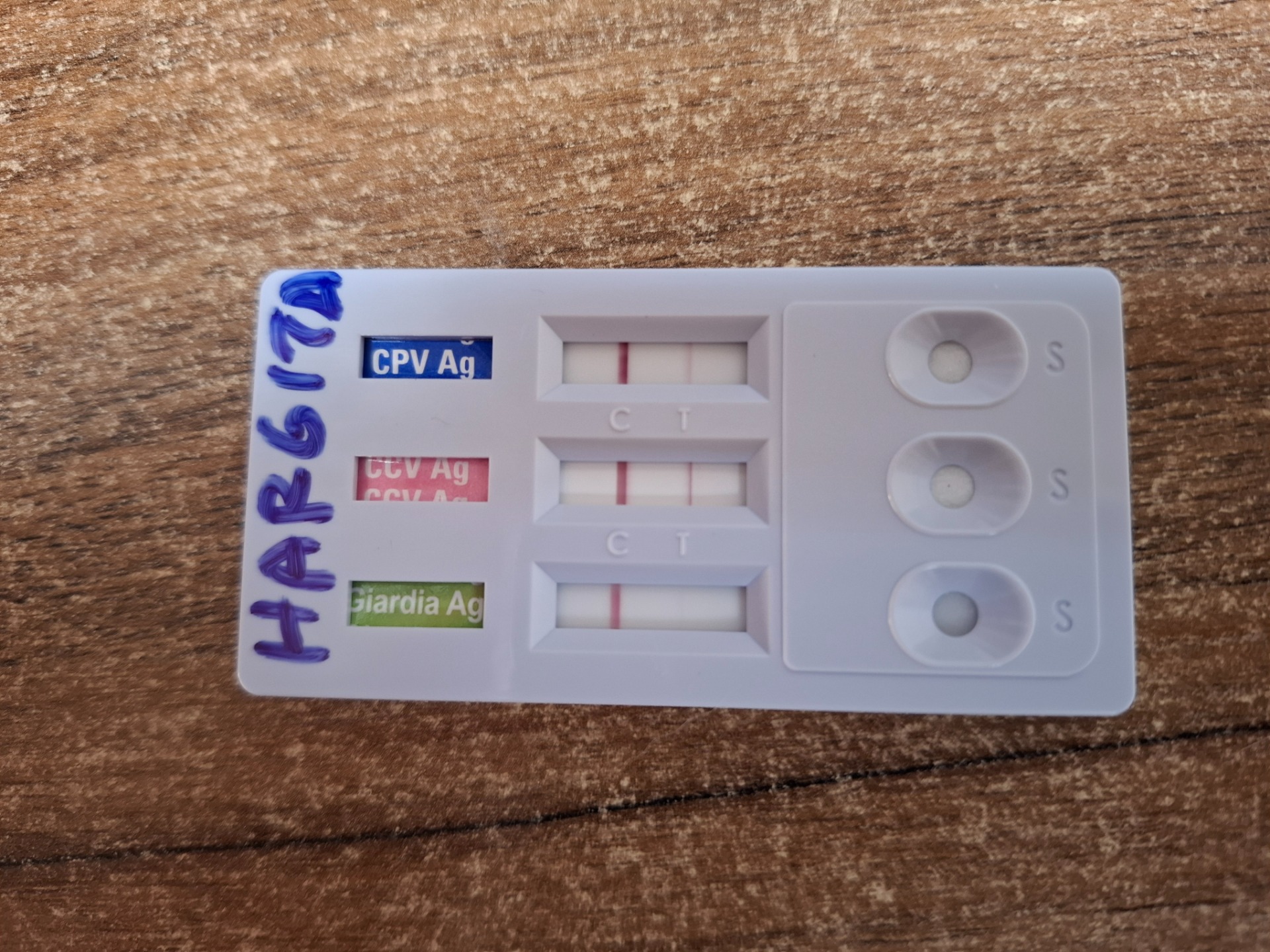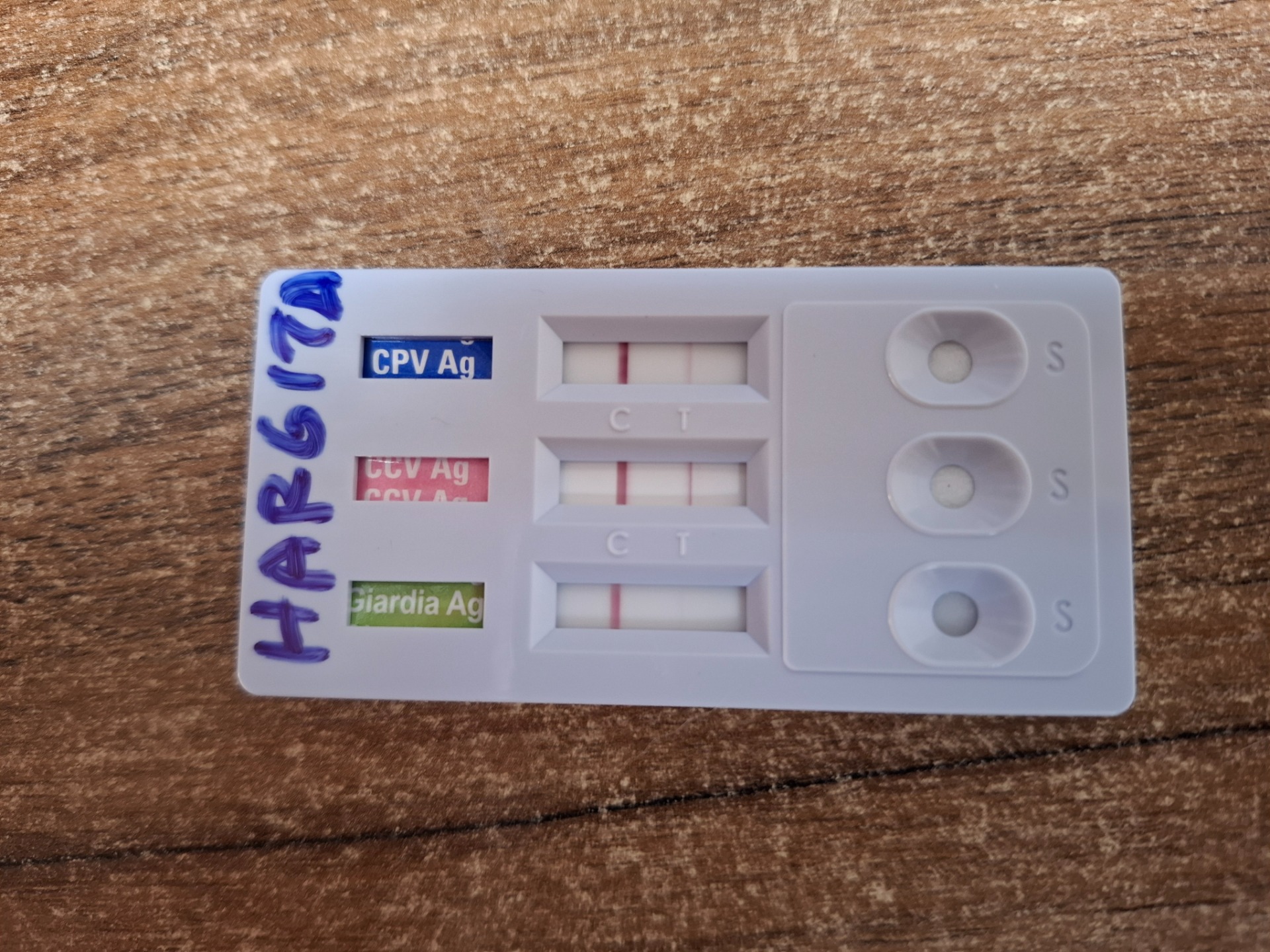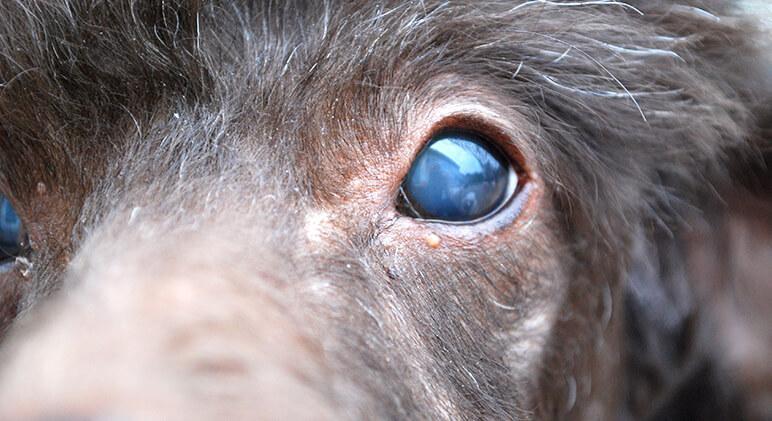Infectious dog diseases can avoid with vaccinations

VACCINATIONS
PARVOVIRAL GUT INFLAMMATION

Introduction:
Enteritis due to parvovirus is the most dangerous infectious disease of young dogs. The causative agent spreads via stool.
Symptoms:
After a few days of incubation, low fever, fever, enervation, lack of appetite occurs, and then the causative agent – impairing the squamous cells seriously – causes bloody diarrhea and vomiting with the attendance of consequent dehydration.
Prevention, treatment:
The maternal immunity protects the puppies against parvoviral gut inflammation until their 5-6 weeks of age, but it is important to start the active immunisation of the puppies with vaccination against parvovirus in their 6-7th week of age.
In case of disease, the gut inflammation can be treated symptomatically. Fluid supplement, protection against causative agents and givin serum is very important.
CORONAVIRAL GUT INFLAMMATION

Introduction:
In case of coronaviral gut inflammation, in young dogs, the surface of the mucous membrane of the gut may be damaged, causing severe diarrhea for days. The causative agent spreads easily via stool.
Symptoms:
After a few days of incubation, lack of appetite, prostration, sometimes low fever, water-like diarrhea, vomiting occurs, the puppies may dehydrate due to the fluid loss. Damage of the mucous membrane of the gut, due to virus, bacterial associate-infection may occur.
Prevention, treatment:
After the 6th week of age of puppies, we can be on the defensive against infection by vaccinating the dogs twice. (with a 2 weeks interval).
It is possible to choose between vaccinations: one component corona-.vaccination or more-component combined vaccination which contains coronavirus.
Treatment of the disease is general,symptomical treatment of gut inflammation; infusion liquid is usually indispensable.
DISTEMPER

Introduction:
In young dogs and ferrets, viral disease is very dangerous, it even may be fatal and can also cause permanent damages in adult dogs. The causative agent spreads quickly via infected secretions, especially nasal secretion.
Symptoms:
After a few days of incubation, serious symptoms – which evolve suddenly – may develop in young dogs; while in older dogs the symtoms are less serious, and they evolve during a longer time.
In younger dogs, high fever is typical, in older dogs, rather subfebrillity, then lack of appetite, droop, catarrhic flow of the eye and nose, in case of bacterial ear infection purulent nasal flow and rarely diarrhea and vomiting occurs.
Nervous systemic symptoms are typical, cramps of various muscle groups (tic) and even paralysis may evolve.
In chronic cases, the nasal mirror and the foot pillows are dry cracked. In pregnant animals miscarriage may occur.
In case of foetal infection, the toothgerm may be damaged, causing enamel-errors in the adulthood. The centric cerebrum inflammation may cause permanent epileptic symptoms later.
In ferrets, the runoff of the disease is faster. The symptoms may develop in a few hours, the nervous systemic symtoms are more dominant and the fall is more common.
Prevention, treatment:
By giving a combined vaccination for the puppies older than 2 or 3 months, in a two weeks period twice, a basic protection can be formed, which can be maintained with repeated vaccinations.
In case of disease, we can only apply symptomatic treatment, but in puppies its outcome is quite uncertain.
INFECTIOUS LIVER INFLAMMATION (RUBARTH-DISEASE)

Introduction:
The infectious liver inflammation of dogs is caused by adenovirus. It may cause a quick and dangerous disease which generally spreads via infected urine, especially in young dogs.
Symptoms:
After a few days of period of incubation, the dog becomes prostate, high fever, bloodshots, jaundice, vomiting, possibly liquid infiltration and cramps may occur, even fall may happen.
Cornea-oedema may also occur, which may cause typical blue-ish darkening on both eyes, so it is also called "blue eye disease". Usually, adult dogs manage to survive the disease with more moderate symptoms.
Prevention, treatment:
Adenovirus is present in combined vaccinations, so if the dogs are regularly vaccinated, the disease occurs rarely.
In case of disease, only symptomatic treatment can be applied.
LEPTOSPIROSIS

Introduction:
Various kinds of leptospira bacteria are not rare in the environment, mostly in water polluted with infectious urine; but luckily, nowadays leptospirosis manifesting in symptoms rarely evolves in dogs, thanks to the combined vaccinations.
Symptoms:
After a few weeks of period of incubation, in younger dogs high fever, dejection, lack of appetite, then jaundice, sometimes cramps occur. Older dogs manage to survive often without symptoms, but severe kidney disfunction may evolve.
Prevention, treatment:
Although it is a bacterial infection, leptospira is present in combined vaccinations, so we can defend against the disease.
Treatment with antibiotics, started in the right time, the treatment of the disease may be successful.
RABIES

HERPESVIRAL INFECTION
Introduction:
The herpes-virus of the dog is principally dangerous for the pregnant female dog, its foetus and the puppies. It is also called as infectious puppy-death. In adult dogs, the infection is usually symptom-less, but the drain of the virus is a long process for the dogs which had the infection.
Symptoms:
In females, the infection may cause barrenness, in case of pregnancy, fall of the foetus, decreased number of litter, uterus infection. The infected newborn puppies do not suckle properly, do not grow, often have watery diarrhea, even nervous systematic symptoms may occur then they die.
Prevention:
The only certain way to prevent the herpes virus is the vaccination which should be given after mating and repeated 2 weeks before the delivery.
KENNEL (CONTAGIOUS) – CAUGH
Introduction:
The diagnosis which is similar to the human flu is indicated by the paraflu virus of dogs which spreads via infected secretions, especially caughing, so it spreads very quickly in kennels and other places crowded with dogs. The viral infection may be aggravated by secondary bacterial infections (mostly Bordatella bronchiseptica, Pasteurella multocida).
Symptoms:
After a few days of incubation, temperature, discomfort may occur, initially contiguous, dry, crackling, goose-gabble-like cough is typical, then it may become purulent due to the catarrhic infections; and the windpipe inflammation may develop to severe pneumonia.
Prevention, treatment:
Dogs often meeting other dogs (in kennels, dog pensions, dog schools), especially the younger ones,it is recommended to defend them against kennel cough, to do so, there is a vaccine which should be dropped into the ears; local immunity evolves.
The vaccine is also for the treatment of the disease, but in case of disease, antibiotics and mucus-looseners for the airways infection are given.
TICK-BORNE DISEASES
Babesiosis
Introduction:
The most common tick-borne infection in dogs is Babesiosis. This is caused by a bite from an infected tick, when the parasite Babesia is transmitted to the bloodstream of the animal.
Symptoms:
Symptoms of this disease usually appear one week after the tick bite. It has quite severe symptoms, which can include high fever, lethargy, and lack of appetite. The parasites multiply in the erythrocytes, while destroying them, causing anemia, pale mucous membranes, and fatigue.
This anemia, caused by the destruction of the red blood cells can dye the urine dark brown. This may also cause jaundice, yellow mucous membranes and, in case of severe infection, it may cause severe kidney failure symptoms, with an increase in drinking and urination and, vomiting. The disintegrated red blood cells may also cause enlargement of the spleen or liver.
Diagnosis:
In addition to a complete history, the veterinarian will do a physical examination and blood test to diagnose Babesiosis.
Prevention and Treatment:
It is very important to prevent the disease by using products effective against ticks and other external parasites. There is now a vaccination against dog babesiosis. It is important to begin the anti-babesiosis treatment as soon as possible to avoid serious symptoms and complications.
There is medication against the parasite, but also other symptomatic treatment (eg. hematopoiesis support, fluid therapy to prevent kidney failure, treatment against secondary infections) may be required.
Lyme Disease
Introduction:
Similar, in many respects, to the human disease, the infection in dogs is spread by ticks infected by Borrellia. Since there is generally a long incubation time, fluctuation of the dog's condition is typical (sometimes being asymptomatic, sometimes having a fever or a limp). Unfortunately, as the symptoms are diverse, accurate diagnosis is often delayed, which can increase the onset of complications.
Symptoms:
Symptoms usually occur several weeks, or even months, after the tick bite. The migratory redness typical of a human infection is not necessarily seen in dogs, and is not easy to notice because of their fur. Low grade fever (high fever is not typical), loss of appetite, and lethargy are usual symptoms. Characteristic hind limb weakness and swaying can also be seen. Permanent limping can be caused by chronic articular degeneration. The pathogen may also attack the heart muscle as well.
Diagnosis:
Suspicion of the disease can be confirmed by blood tests.
Prevention and Treatment:
Defense against ticks is the most important factor in preventing Lyme Disease. Tick repellent products should always be used and it is necessary to look through our pet's fur after walking, especially through wooded or grassy areas. If a tick is found, it should be carefully removed as soon as possible, preferably with a tick-remover.
There is a vaccination against Lyme Disease which can protect against the disease.
Full recovery is possible, if the diagnosis is made in time, and full course of antibiotics is taken.
